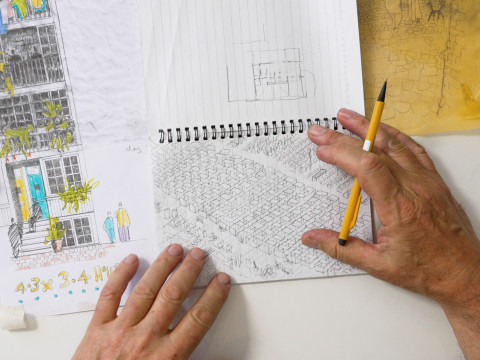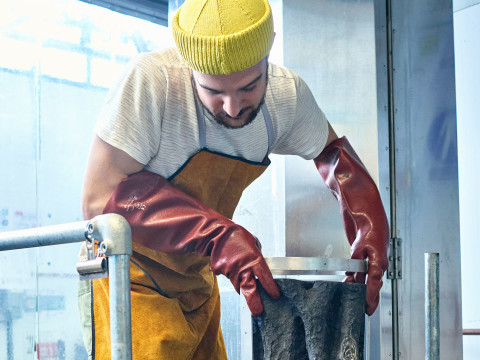
The month in architecture
By Helena Cuss
Published on 29 January 2016
Five things you need to know this month – the top architecture news stories, the most exciting new projects and the latest prizes.
Plans for Martian living
The New Year began with a plethora of designs for buildings on Mars, with proposals from American and European architects. AO Clouds and SEArch won a NASA-run competition with Ice House, a 3-D printed astronaut base, which features a double-layered shell of ice that would protect the inhabitants from ultraviolet solar and galactic gamma radiation. Also this month, scientists from Northwestern University in Illinois presented a formula for a kind of “Martian concrete” made from Martian soil and molten sulphur, which can be created without water, in scant supply on the red planet. Spanish architect Alberto Villanueva has revealed his Mars Utopia concept, which features towers formed by Martian bacteria, soil and ice, which would convert carbon dioxide into oxygen.
See the runners up to the NASA competition.
Read more about Mars Utopia on Dezeen.

PM to destroy Brutalist estates
David Cameron has attacked the UK’s post-war social housing estates as “sink-holes” responsible for cultivating crime and poverty, and has pledged £140m their demolishment or regeneration. He believes that the design estates, often built in the controversial Brutalist style of the 1960s and 70s with “dark alleyways” that are “a gift to criminals and drug dealers”. The plans have divided critics; many worry that more social housing stock will be lost to private housing developers, as Cameron has announced that selling off some of the land will help fund the regeneration of the remaining council-run sections of the estates. This is a provocative topic at the moment: the South London Heygate Estate was demolished amid protests in 2014 and Robin Hood Gardens in Poplar recently lost a last-ditch attempt to save it from the bulldozer. However, in 2013 Park Hill estate in Sheffield escaped the same fate through a successful regeneration project.

Ron Arad's Palestinian-Israeli hospital
Architect Ron Arad has revealed designs for a cancer treatment centre which will serve Jewish, Christian and Muslim communities in northern Israel, the first of its kind to offer facilities to inhabitants of the West Bank conflict zone. The hospital will be situated in the Emek Medical Centre in Afula, and named Beit Shulamit after the late philanthropist Shulamit Katzman, whose “warmth, charisma and personality” Arad has said he wants to invoke in his design. Arad was born in Tel Aviv, and also designed Israel’s Design Museum.

First “amphibious house” completed
The UK’s first “floating house”, named Formosa, has been completed by Baca Architects on an island in the middle of the River Thames at Marlow, in Buckinghamshire. The construction could not be more timely, after severe flooding hit communities in Scotland and Northern England over the Christmas period. Formosa, is built on foundations that are fixed but separate, similar to a dock, which allows it to rise in times of flooding, floating on up to 2.5m of water. The house also features flexible pipes which can stretch up to 3m if the house rises. Baca Architects also submitted designs for prefab floating housing on London’s canals in New London Architecture’s housing design competition last year.
Alejandro Aravena wins Pritzker Prize
The founder of architecture practice ELEMENTAL has become the first Chilean to win architecture’s most coveted award. The practice is known for championing user-expandable social housing: the architects use limited government subsidies to build the essential half of a family home, which can be completed by residents over time according to their family size and financial situation. Aravena has since built many of these incremental housing complexes in the Americas and has voiced concerns that building regulations in Europe are preventing similar building there, which will be needed more than ever to deal with the refugee crisis. He has put this subject at the heart of his curation of this year’s Venice Architecture Biennale. Tom Pritzker, chairman and president of prize sponsor the Hyatt Foundation, described Aravena’s work as “innovative and inspiring, [it] shows how architecture at its best can improve people’s lives”.
Read the official announcement from Pritzker and explore Aravena’s work.





